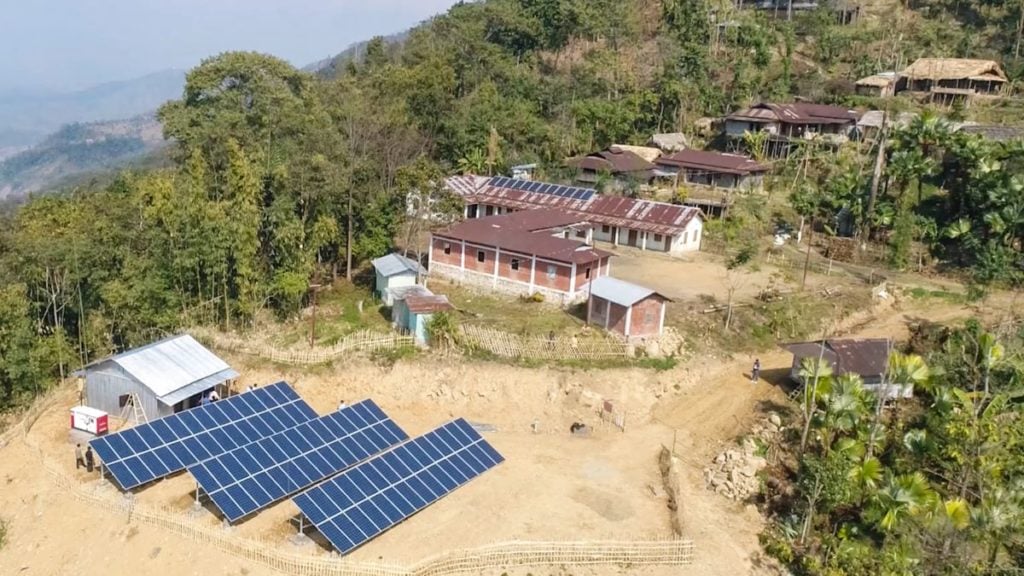
In February, the Indian government announced its interim budget for 2024-25, including plans to allow the public to access solar and allocate more resources to the Ministry of New and Renewable Energy (MNRE).
One of the plans is to allow ten million households to obtain free solar electricity every month. Indian finance minister Nirmala Sitharaman proposes that free 300kWh of electricity will be provided to ten million households in India every month under the rooftop solar plan. The beneficiaries can save up to INR18,000 (US$216.7) from free electricity and selling the surplus to distribution companies.
Unlock unlimited access for 12 whole months of distinctive global analysis
Photovoltaics International is now included.
- Regular insight and analysis of the industry’s biggest developments
- In-depth interviews with the industry’s leading figures
- Unlimited digital access to the PV Tech Power journal catalogue
- Unlimited digital access to the Photovoltaics International journal catalogue
- Access to more than 1,000 technical papers
- Discounts on Solar Media’s portfolio of events, in-person and virtual
Vinay Rustagi, senior director, global head of renewables at Indian analyst firm Crisil, says this plan could offer huge opportunities for Indian solar manufacturers and installers. However, more details about the new solar programme need to be announced.
“So far, we have many conflicting announcements regarding the programme size, target customers, budget, sources of funding and business models. We expect the eventual target to be around 15GW, all tied to the use of domestically made cells and modules over the next three to five years, which should boost domestic manufacturers and installers,” Rustagi says.
A week after the announcement of the budget, the Indian government announced it will provide a subsidy of INR30,000 for installing solar power equipment of 1kW. For 2kW and 3kW rooftop systems, the subsidies will be INR60,000 and INR78,000 respectively.
“This translates to 60-70% higher subsidy support than before, improving the affordability for small users. Given this rooftop solar scheme will cover ten million households,” says Miren Lodha, director of research at Crisil.
“At an estimated plant load factor of 18-20%, as much as 300 units could be generated by a household in a month. Given this rooftop solar scheme will cover ten million households, incremental capacity addition would be 20-23 GW,” he adds.
Government’s role in materialising the plan
However, as the budget is the Indian government’s financial plan, more long-term policy decisions are made separately, according to Rustagi. Therefore, the success of the rooftop solar subsidy scheme will hinge on clarity, including customer eligibility, funding sources, timelines and criteria related to installation size and technology.
Rustagi comments: “The government needs to clarify the implementation process—the roles and responsibilities of different parties, what kind of technology can be used and eligibility criteria for installers. Also, will it all be government-managed and contracted, or will the consumers be free to choose vendors themselves?”
He adds that the Indian government can carve out a significant role for the private sector with strict conditions related to technology use and operational performance to better implement the scheme.
Lodha describes the increased subsidy as a “big positive,” while consumer awareness and effective implementation of state-level policies by distribution companies will be crucial for installations to pick up the pace.
According to the Indian policy think tank Council on Energy, Environment and Water (CEEW), India boasts about 118GW of economic potential in residential rooftop solar with a condition of restricting rooftop solar size to meet households’ electricity demand. When it comes to market potential, India boasts 32GW with the MNRE’s capital subsidy.
Meanwhile, the Indian government originally aimed to install 100GW of solar by 2022, of which 40GW would be rooftop solar. However, as of 2023, India had installed about 11GW of rooftop solar capacity, including commercial and residential installations, of which only 2.7GW was in the residential sector.
The Indian government revised the deadline to reach the 40GW capacity to March 2026. Lodha says the potential of 20-23 GW capacity put forward by the budget is “over and above the existing base of about 11GW of residential rooftop solar”.
“Consumer interest, timely execution and state facilitation are vital to reaching the targets. Furthermore, the commercial and industrial segment will also add to the installed base of solar capacity,” Lodha says.
The residential rooftop market accounts for only about 4% of total solar installations. If the Indian government successfully implements the new rooftop solar programme mentioned in the budget, annual residential rooftop solar installations could increase by up to five times over the current rate of 700MW, according to Rustagi.
Aside from residential rooftop solar, PV Tech reports that solar PV accounted for 55.8% of the total power generation capacity added to the Indian grid in 2023, including fossil fuel additions which rose considerably over the year in response to growing electricity demand.
According to data from the Institute for Energy Economics and Financial Analysis (IEEFA), India added 10.01GW of solar PV capacity in 2023, a decrease of almost 4GW from the 13.9GW added in 2022. This represents a 28.2% decline year-on-year, which the IEEFA attributes to project commissioning delays as a result of procurement issues from the Approved List of Models and Manufacturers (ALMM) policy.







